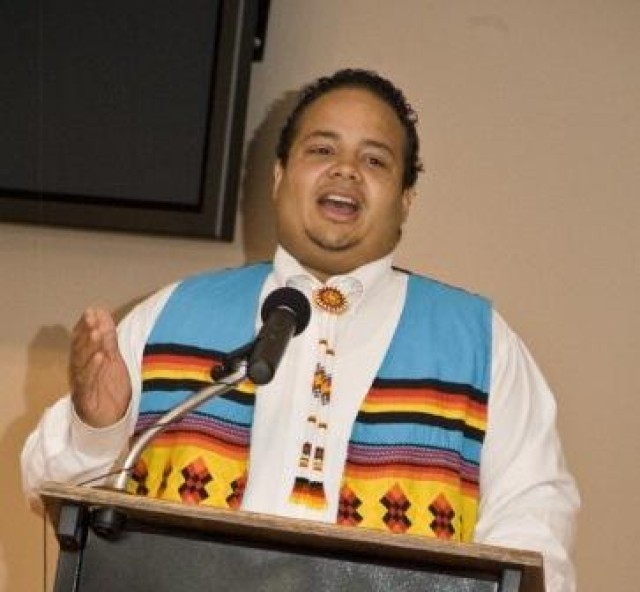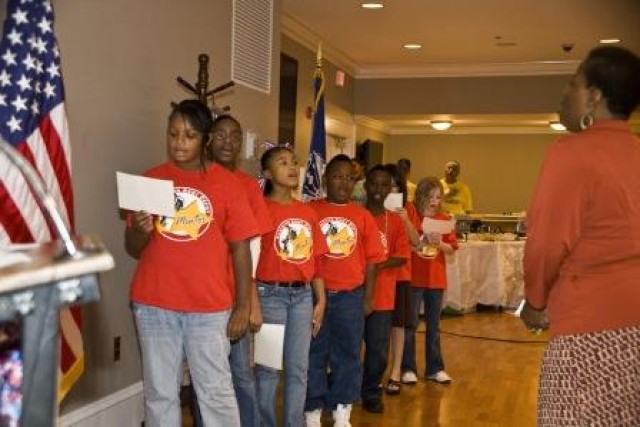ANNISTON ARMY DEPOT, Ala. - The 200-plus depot employees attending the Nov. 18 luncheon here to observe National American Indian Heritage Month were presented with a lesson on sustainment.
Keynote speaker Alex Alvarez, cultural education coordinator for the Poarch Band of Creek Indians, said the U.S. settlers at the end of the American Revolution laid plans to extinguish the Native American culture and language.
"Hesci!" said Alvarez. "We've survived and are here today."
Hesci (pronounced heese-chee) means "Hello" to the Muscogee Creek Indians. Alvarez said there are 7,000 people still using the Muscogee language and that Native American languages can only be found North America.
"The true test of time is passing along our language," Alvarez said.
Alvarez and the Poarch Creek Powwow Club, a Native American dance troupe that performed during the program, are members of the only federally recognized Indian tribe in Alabama, operating as a sovereign nation with its own system of government at a reservation near Atmore in Escambia County.
Children in the dance troupe gave two performances to the sound of Alvarez's musical composition, which was created by his voice and a drum.
He said that the group's dress - breechcloths, moccasins, feather headdresses and ornamentation - has become more colorful - brilliant shades of yellow, blue, orange, green, etc. - over the years to replace the muted shades that once helped camouflage their ancestors in the forests.
But, he said, the forests have always been used and valued by the Native Americans and still remain a source for cures in the medical field. "Aspirin comes from willows," he said. "We dig our hands in the earth and appreciate it."
Alvarez said this year's theme, "Understanding Native American Heritage Now & Then," reminded him that people must live in two worlds: "The more and more we go forward, the more we must look back. We must learn in one hand and teach in the other."
Delving more into the placement of Native Americans in society, the speaker said, "we're all the things that make up North America."
He noted that Native Americans make up the highest per capita race in the U.S. military, showing pride in their heritage dating back to the ancient war societies. In addition, he said the Indians planted and harvested foods that people continue to find more uses for in the 21st century - corn, the main staple of their diet and what saved the settlers from starvation, is now being used as a power source in vehicles.
Alvarez in no way discounted the positive influence of those who have come into this country since the early days of U.S. government. "America was built on the hard work of immigrants," he said.
While the speaker was able to address the history and current impact of Native Americans, the children of the Poarch Creek Powwow Club showed that their culture is still alive and well.
"I enjoyed learning about the Indian culture, and the speaker and the dancers really impressed me," said Randy Smith, a painter who works in Bldg. 117.
"We're all different, and we've got so much to learn from each other," said Depot Sgt. Maj. Tony Butler.






Social Sharing